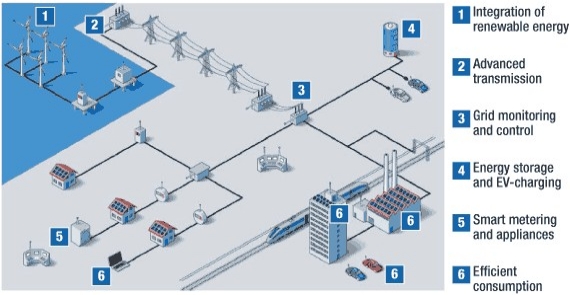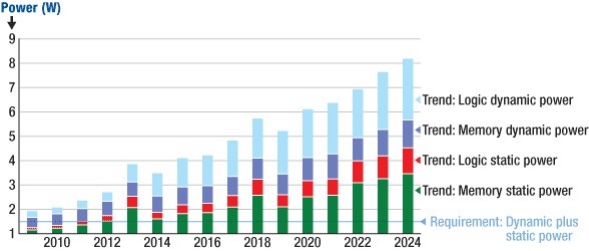by Laura Peters, contributing editor
January 18, 2010 – It is no surprise that the semiconductor industry has become more conscience of energy consumption concerns and the environmental impact of its manufacturing operations. In late December 2010, the International Technology Roadmap Committee released the ITRS update, and for the first time it overtly addresses energy consumption issues. The roadmap states: "Since semiconductor electronics are broadly applicable to energy collection, conversion, storage, transmission and consumption/usage, it is not surprising that the ITRS addresses many factors of significance to energy issues."
The new goals in this area pertain not only to the development of semiconductor devices that are more energy efficient, but also call for semiconductor fabs to use less energy, use more energy efficient equipment and materials, and create less waste. In terms of the energy transmission food chain (i.e., smart grid), semiconductors play an inherent role in making these systems more efficient and productive (Figure 1).
 |
| Figure 1: In all segments of the energy "food chain," from generation via distribution to consumption, semiconductor power technology devices are required. (Source: Infineon) |
At the device and circuit level, the Roadmap sets aggressive targets for energy use per computational operation (per bit for memory, per MIPS for logic). But perhaps more important than the per bit/MIPS consumption (Figure 2) is the influence that signal processors, microcontrollers and power/battery management devices can have on power consumption in numerous applications, from automotive to communications to transportation. It is a long-term goal (within 15 years) to develop emerging materials and devices — including that which will replace the CMOS switch — that are inherently energy efficient.
 |
| Figure 2: SOC consumer portable power consumption trends. |
This focus on energy is not new to many aspects of the Roadmap. In both the system-level drivers and design chapters, the emphasis on power consumption has been evident for the last seven years. The design chapter has addressed leakage power and its variability as key design challenges over the last 15 years.
In future Roadmap editions, the industry can expect more concrete examples of ways of addressing energy efficiency in semiconductor manufacturing and its applications. For more details on the 2010 edition, see the ESH and Factory Integration chapters of the ITRS.

